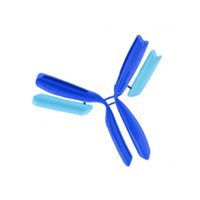OP76 Sigma-AldrichAnti-p21WAF1 (Ab-4) Mouse mAb (65)
Recommended Products
Overview
| Replacement Information |
|---|
Key Spec Table
| Species Reactivity | Host | Antibody Type |
|---|---|---|
| M, R | M | Monoclonal Antibody |
| Product Information | |
|---|---|
| Form | Liquid |
| Formulation | In 50 mM sodium phosphate buffer, 0.2% gelatin. |
| Positive control | Rat or mouse embryo fibroblast cell lines treated with Actinomycin D (Cat. No. 114666) |
| Preservative | ≤0.1% sodium azide |
| Quality Level | MQ100 |
| Physicochemical Information |
|---|
| Dimensions |
|---|
| Materials Information |
|---|
| Toxicological Information |
|---|
| Safety Information according to GHS |
|---|
| Safety Information |
|---|
| Product Usage Statements |
|---|
| Storage and Shipping Information | |
|---|---|
| Ship Code | Blue Ice Only |
| Toxicity | Standard Handling |
| Storage | +2°C to +8°C |
| Do not freeze | Yes |
| Packaging Information |
|---|
| Transport Information |
|---|
| Supplemental Information |
|---|
| Specifications |
|---|
| Global Trade Item Number | |
|---|---|
| Catalogue Number | GTIN |
| OP76 | 0 |
Documentation
Anti-p21WAF1 (Ab-4) Mouse mAb (65) SDS
| Title |
|---|
Anti-p21WAF1 (Ab-4) Mouse mAb (65) Certificates of Analysis
| Title | Lot Number |
|---|---|
| OP76 |
References
| Reference overview |
|---|
| Agarwal, M.L., et al. 1995. Proc. Natl. Acad. Sci. USA 92, 8493. Chen, Y.Q., et al. 1995. Int. J. Oncology 7, 889. Deng, C., et al. 1995. Cell 82, 675. El-Deiry, W.S., et al. 1995. Cancer Res. 55, 2910. Waldman, T., et al. 1995. Cancer Res. 55, 5187. Elbendary, A., et al. 1994. Cell Growth Diff. 5, 1301. El-Deiry, W.S., et al. 1994. Cancer Res. 54, 1169. Li, R., et al. 1994. Nature 371, 534. Michieli, P., et al. 1994. Cancer Res. 54, 3391. Noda, A., et al. 1994. Exp. Cell Res. 211, 90. El-Deiry, W.S., et al. 1993. Cell 75, 817. Gu, Y., et al. 1993. Nature 366, 707. Harper, J.W., et al. 1993. Cell 75, 805. Xiong, Y., et al. 1993. Nature 366, 701. Xiong, Y., et al. 1993. Genes Devel. 7,1572. Xiong, Y., et al. 1992. Cell 71, 505. |







